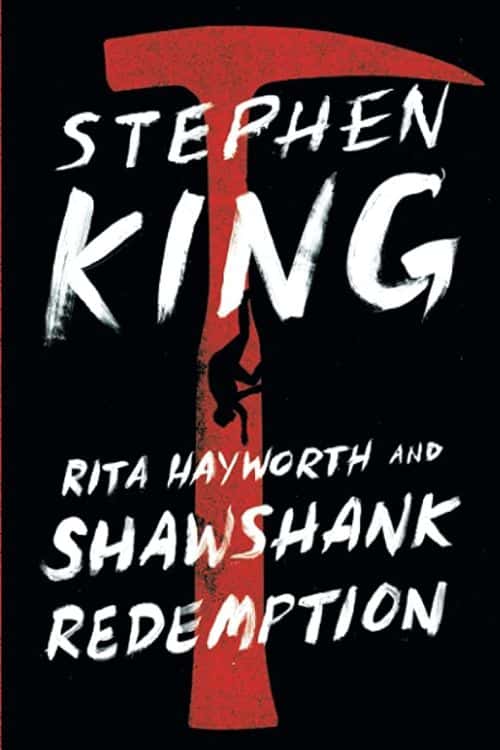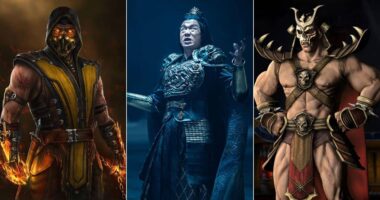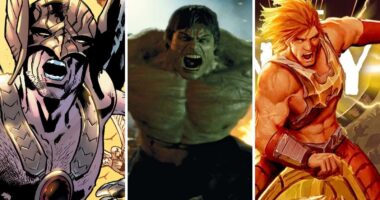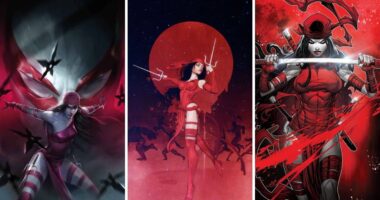Throughout history, literary works have served as a profound source of inspiration for iconic movies, transcending the boundaries of their original medium. This article explores 5 Short Novels That Inspired Iconic Movies that left an indelible mark on cinema, fueling unforgettable adaptations. These compact yet compelling literary gems have provided the creative foundation for films that captivate generations, showcasing the collaborative power of literature and film.
5 Short Novels That Inspired Iconic Movies
Rita Hayworth and Shawshank Redemption

“Rita Hayworth and Shawshank Redemption” is the original title of the novella written by Stephen King. It was published as part of his collection of stories, “Different Seasons,” in 1982. The novella tells the story of Andy Dufresne, a banker who is wrongfully convicted of murder and sentenced to life in Shawshank State Penitentiary.
The novella gained significant acclaim for its compelling narrative and exploration of themes such as hope, friendship, and the resilience of the human spirit. It is written in the form of a memoir by Red, a longtime inmate at Shawshank, who recounts Andy’s experiences and their enduring friendship.
The movie adaptation of the novella, titled “The Shawshank Redemption,” was directed by Frank Darabont and released in 1994. Darabont acquired the film rights to the novella after being impressed by King’s storytelling. The film starred Tim Robbins as Andy Dufresne and Morgan Freeman as Red. It faithfully captured the essence of the novella, portraying the bond between the two central characters and their journey within the prison system.
“The Shawshank Redemption” movie was not an immediate box office success upon release but garnered critical acclaim and positive word-of-mouth. It eventually became a beloved classic, gaining recognition for its emotional depth, compelling performances, and resonant storytelling. The film’s success was also fueled by its availability on home video and repeated broadcasts on television, allowing a wider audience to discover and appreciate its merits.
Brokeback Mountain

The film adaptation of “Brokeback Mountain,” released in 2005, was directed by Ang Lee and received widespread critical acclaim. The movie starred Heath Ledger as Ennis Del Mar and Jake Gyllenhaal as Jack Twist, and their performances garnered significant praise.
The film stays faithful to the emotional depth and themes presented in Annie Proulx’s short story. It explores the forbidden love between Ennis and Jack, who develop a passionate relationship while working as sheepherders in Wyoming during the 1960s. The story spans several decades, showcasing the enduring connection between the two characters despite societal expectations and personal struggles.
The film delves into themes of love, identity, and repression. It examines the internal conflict faced by Ennis and Jack as they navigate their feelings within a conservative and judgmental society. The movie provides a poignant exploration of the complexities of human emotion and the sacrifices people make for love.
“Brokeback Mountain” was praised for its sensitive portrayal of same-sex relationships and its ability to transcend boundaries. It received numerous accolades, including three Academy Awards, and was nominated for Best Picture. The film’s impact extended beyond the LGBTQ+ community, sparking conversations about love, acceptance, and the consequences of suppressing one’s true self.
The Great Gatsby

“The Great Gatsby” is a classic novel written by F. Scott Fitzgerald and published in 1925. The book is set in the Jazz Age of the 1920s and explores themes of wealth, love, and the American Dream. It follows the story of Jay Gatsby, a wealthy and mysterious millionaire, and his pursuit of Daisy Buchanan, a married woman with whom he had a previous romantic relationship.
The novel has been adapted into several films over the years, but one of the most iconic adaptations is the 2013 film “The Great Gatsby.” Directed by Baz Luhrmann, the film stars Leonardo DiCaprio as Jay Gatsby, Carey Mulligan as Daisy Buchanan, and Tobey Maguire as Nick Carraway, the narrator of the story.
Luhrmann’s adaptation received attention for its lavish visual style and incorporation of modern music into the film’s soundtrack. It aimed to capture the opulence and excess of the 1920s, bringing the story to life with grandiose parties, vibrant costumes, and stunning cinematography. The film received mixed reviews from critics but was a commercial success, grossing over $350 million worldwide.
The War of the Worlds

Science fiction novel “The War of the Worlds” written by H.G. Wells and published in 1898. It tells the story of an alien invasion of Earth and the struggles of humanity to survive. The novel is set in late 19th-century England and follows an unnamed narrator as he witnesses the Martian tripods, gigantic machines equipped with deadly weapons, wreak havoc and destruction across the country.
One of the most notable adaptations of “The War of the Worlds” is the 2005 film directed by Steven Spielberg, simply titled “War of the Worlds.” This film starred Tom Cruise and Dakota Fanning and presented a modern-day retelling of the novel. While the film takes certain liberties with the source material, it retains the core elements of an alien invasion and the desperate struggle for survival.
Fight Club

“Fight Club” is a novel written by Chuck Palahniuk and published in 1996. The book gained widespread recognition and inspired the film adaptation of the same name, directed by David Fincher and released in 1999. The movie starred Brad Pitt, Edward Norton, and Helena Bonham Carter in the lead roles.
The story revolves around an unnamed narrator, referred to as the “narrator” or “Jack” in the book and played by Edward Norton in the film. He is a disenchanted white-collar worker suffering from insomnia and a general sense of dissatisfaction with his mundane life. Seeking a sense of purpose and release from his monotonous existence, the narrator creates an alter ego named Tyler Durden, portrayed by Brad Pitt in the film.
Tyler Durden is a charismatic and anarchic character who encourages the narrator to reject consumerist culture and embrace his primal instincts. Together, they form an underground fight club, where men gather to engage in brutal and cathartic bare-knuckle brawls. The fight club quickly gains a cult following and evolves into a subversive organization called Project Mayhem, dedicated to disrupting societal norms and challenging the established order.
Throughout the story, Palahniuk explores themes of masculinity, identity, consumerism, and the disillusionment of modern life. The narrative takes several unexpected twists and turns, blurring the line between reality and delusion as the protagonist becomes increasingly embroiled in a complex and violent world.
Also Read: 5 Best Two-Part Movie Series, Ranked


